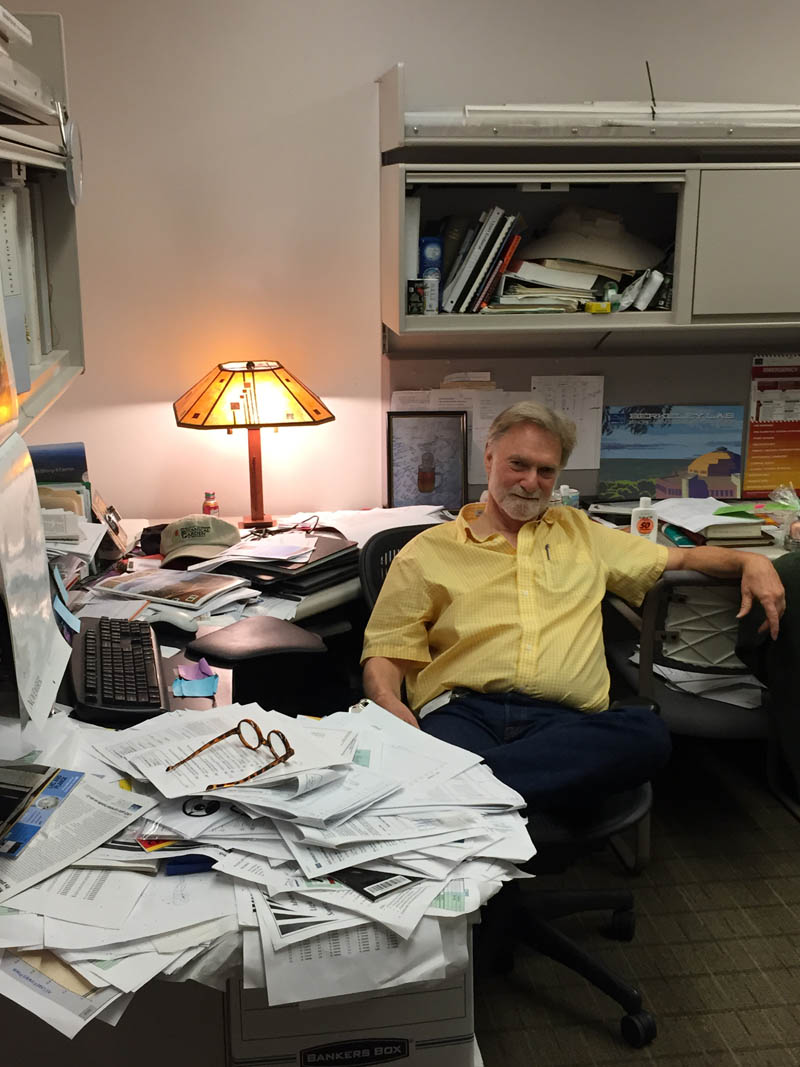 We sat down recently with Principal Scientific Engineering Associate Warren Byrne to get his take on the history and future of the ALS, from an accelerator point of view.
We sat down recently with Principal Scientific Engineering Associate Warren Byrne to get his take on the history and future of the ALS, from an accelerator point of view.
How long have you been at the Lab?
I’ve been at the Lab for about 37 years in March. I started in the operations group at the Bevatron, doing shift work. When I was working the swing shift I didn’t come in until 4:00pm, so in the mornings I would work on restoring my 1902 Maybeck home in the Berkeley Hills. Home restoration was my “other life” for about 13 years. The house was recently written up in American Bungalow magazine.
What are some highlights from your time at the ALS?
I moved to the ALS as it was being built in 1992, starting out in the operations group and then moving into the accelerator physics group. For the past 16 years, I’ve been in charge of overseeing the injector system, which consists of the linac and the booster synchrotron and the electron gun. I’ve really enjoyed living so close to work, being able to almost literally walk to the office. Because of that, I’ve also become the go-to person when things are going wrong at the ALS in the middle of the night! It’s a 24/7 operation, and we take the status of the beam really seriously.
What has kept you at the ALS all these years?
Well, I feel like it has literally kept me alive! I don’t have a commute…. Even if I drive in, there are only two stop signs before I’m here. I can be here in 5 minutes. When I’m at work, I’m moving around all day, whether on the beamline floor or around the Lab at lunchtime. I’m afraid I would be terribly lazy if it weren’t for work. I grew up in Montclair and have lived in Berkeley since 1970, so it’s definitely home to me. It’s also been really interesting and challenging to be a part of this facility all these years and see the machine through multiple upgrades. The technical challenges are just so unique. It never gets boring.
Looking forward, what do you see as potential in the ALS?
There is a lot of potential in an upgrade of the ALS to make the beam smaller and brighter. Of course that requires a huge revamp of the facility; pulling out and replacing all the magnets and in order to get the small beam size the magnetic fields have to be quite strong. To get strong fields, pole tips need to be closer together, which means the vacuum chamber has to be a lot smaller so there’s less room for the beam to travel. With such a small aperture, the way we have to inject the beam is totally different. Unlike the current injection scheme where a few electron bunches are added each shot to the existing beam, after the upgrade, the entire storage ring beam will be swapped out into an accumulator ring, while at the same time a higher intensity beam from the accumulator is injected into the storage ring. The beam in the accumulator ring then gets topped up before the next beam swap-out. This exchange of beams between the storage ring and accumulator will occur at intervals of several tens of seconds.